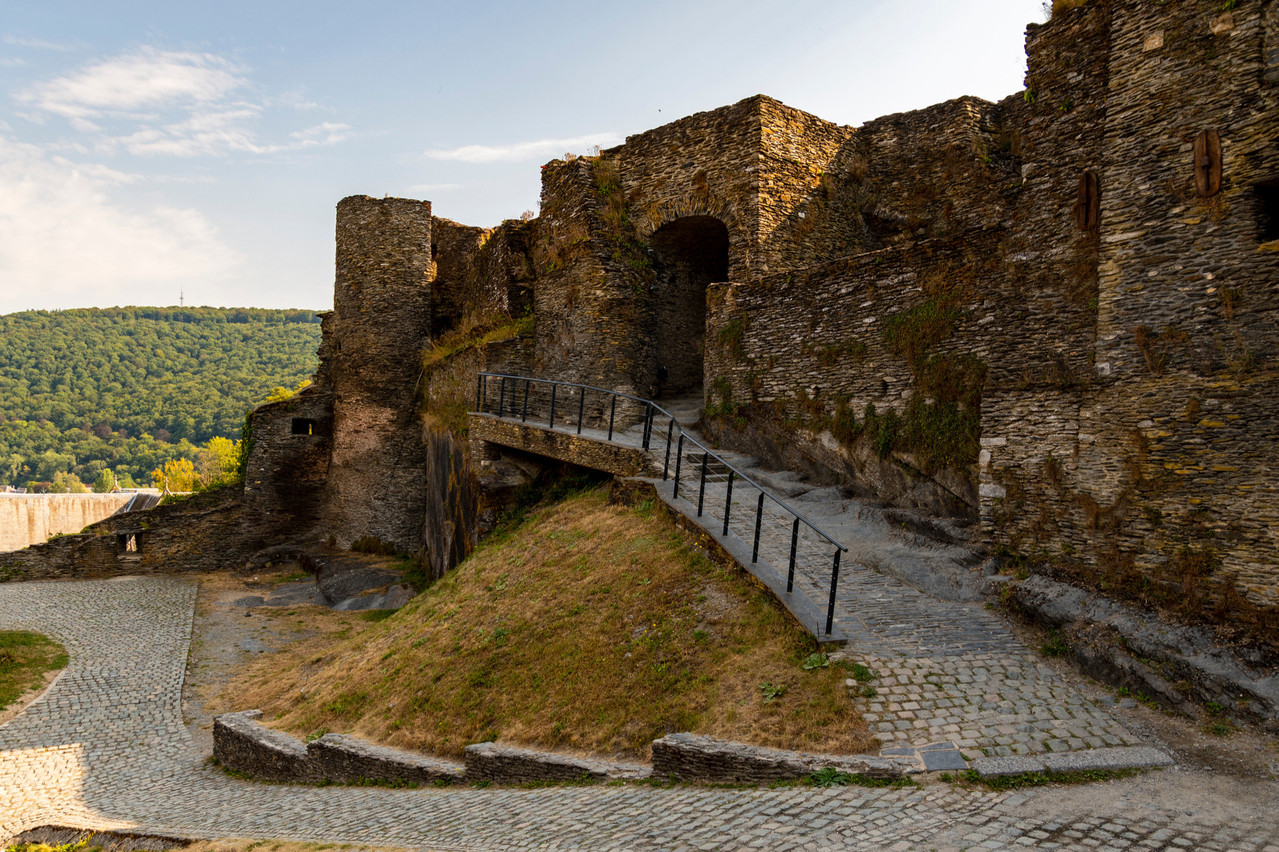If you say "castle" in the province of Luxembourg, the answer is , but also "La Roche". The ruins of the castle of La Roche-en-Ardenne are magnificent site, a tourist magnet for the whole region, which is full of other potential activities, such as hiking, kayaking down the Ourthe river, discovering the sites of the Battle of the Bulge and not forgetting some excellent restaurants.
From Luxembourg City, it’s around a hundred kilometres to La Roche, but about forty from Wincrange, Clervaux or Troisvierges. It is worth the trip, especially since the castle of La Roche has close links with the present grand duchy.
Overlooking the Ourthe and situated on a rocky promontory, the site has always had great strategic importance. The Celts were present there. The Romans also took up residence. But it was not until the 8th century that Pepin of Landen built what was more of a villa, with its agricultural outbuildings, than a castle. It was not until 844 that Adelard built a castle. He was the first count of La Roche.
Henry the Blind, then Ermesinde
Little by little, the buildings were developed and protections erected. In 1152, the castle and the county passed into the hands of Henry the Blind, who was also Count of Luxembourg and who died in Echternach. On his death, his daughter Ermesinde became Countess of La Roche, Luxembourg, Durbuy and Marchioness of Arlon. It was she who built the abbey of Clairefontaine, which centuries later became a school where many Luxembourgers, including , attended secondary school.
La Roche, in connection with the counts of Luxembourg, experienced a golden age, especially during the time of John the Blind, who authorised the construction of towers and walls.

The visit requires some effort, as some paths are steep. (Photo: Shutterstock)
Louis XIV put an end to all this. He had the castle modified, strengthening its defences. But he also dragged it into the War of the Spanish Succession. The victorious coalition took it over and abandoned it. In 1721, already in a bad state, the castle fell victim to a fire, and was then partly dismantled. Vandalism brought it to its knees. Then, to make matters worse, it was bombed during the Battle of the Bulge, during which the small town was razed to the ground.
The building surrounded by towers was in ruins. However, it was bought by the Belgian state in 1852 and local residents were very attached to it. Several excavation sites were organised as well as consolidation work. In 1976, it was listed as a Walloon heritage site and was finally protected. Since then, it has become the spearhead of the local tourism policy.
The visit to the ruins is exciting but requires some effort as the paths are steep. It is not possible to get there in a wheelchair. A word of advice: don't hesitate to visit La Roche when it's freezing cold. Firstly, there will be fewer people there. Secondly, winter gives it a very special charm.
Berthe's ghost
This is also Berthe's favourite season. She was the daughter of a lord of La Roche, so beautiful that her suitors were too numerous to be counted. Her father organised a tournament to decide between them. Among them was Waleran, who was engaged to Marie de Salm. Against all odds, the tournament was won by a mysterious black rider, who won Berthe's hand. But the day after the wedding night, the bride was found stabbed in the castle moat. Only then was it discovered that the black rider was Marie de Salm, who made a pact with the devil to exact her revenge. Since then, Berthe has haunted the castle, especially on windy nights.
Beware: La Roche was the victim of the latest floods. Not so much the castle, which is high up, but the local tourist office, which can give you all the information you need about everything to do in the area. You can reach them at [email protected].
This story was first published in French on . It has been translated and edited for Delano.
